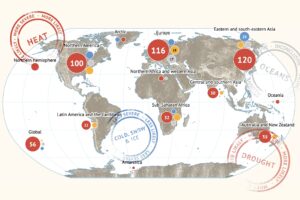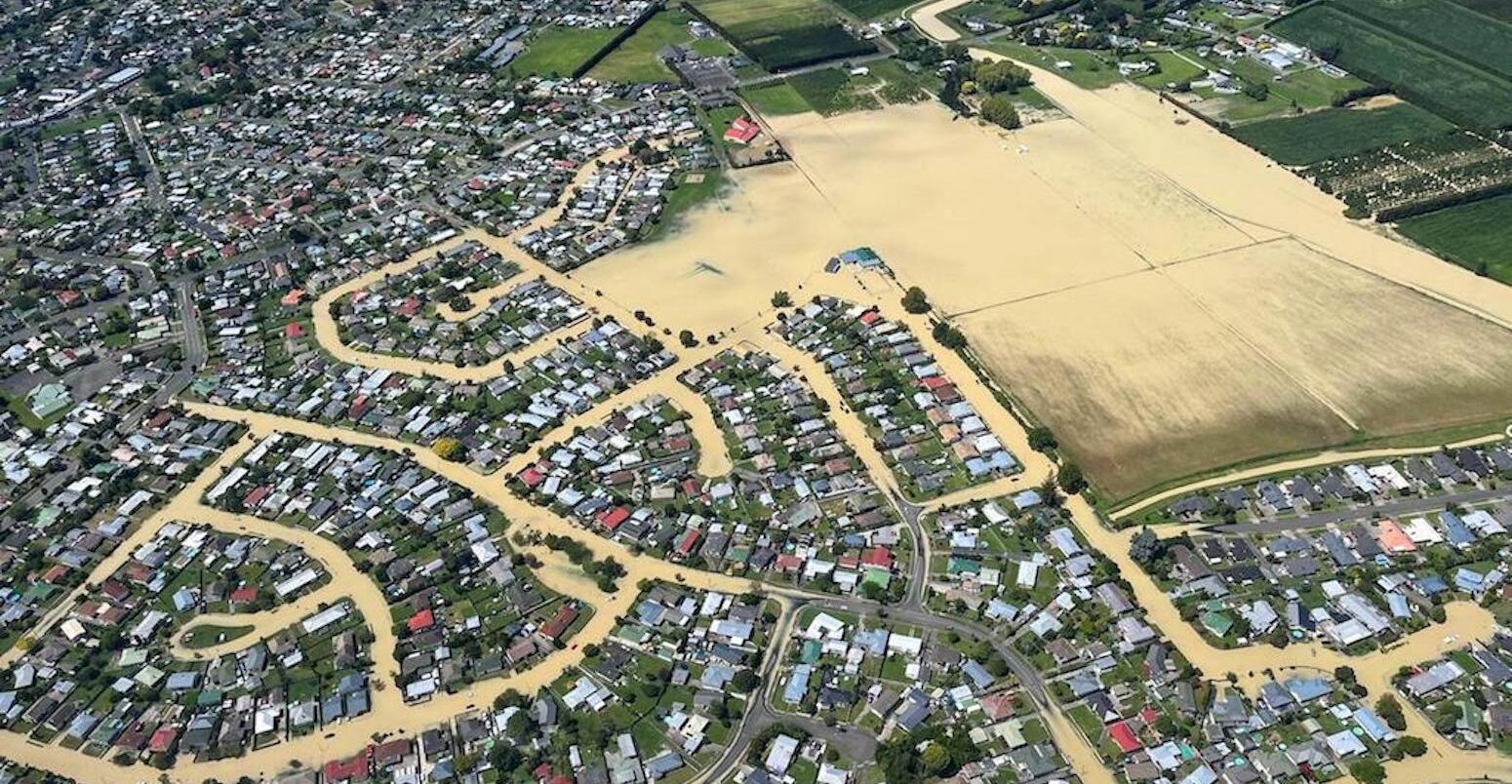
Heavy rainfall from New Zealand’s Cyclone Gabrielle ‘more common on warmer planet’
Ayesha Tandon
03.14.23Ayesha Tandon
14.03.2023 | 11:10amHeavy rainfall events comparable to the intense downpour that hit New Zealand in February 2023 during Cyclone Gabrielle are four times more frequent in today’s climate, a new “rapid-attribution” study finds.
Cyclone Gabrielle made history as the costliest tropical cyclone in the southern hemisphere, causing more than $8bn in damages. At least 11 people died when the cyclone swept across New Zealand in February 2023.
Te Tairāwhiti (Gisborne) and Te Matau-a-Māui (Hawke’s Bay) were “the epicentre of devastation”. The World Weather Attribution service investigates the extreme rainfall that hit this region over 13-14 February. Their scientists could not determine how much more likely or intense this particular extreme rainfall event was as a result of climate change.
However, the authors conclude that such extreme rainfall events now produce 30% more rain than they used to. Furthermore, they find that rainfall events on this scale are four times more likely to happen in today’s climate than before humans warmed the planet, with a roughly 3% chance of happening in a given year.
Cyclone Gabrielle
In early February 2023, a tropical low pressure system formed in the Pacific Ocean and began moving westwards, where warm temperatures and favourable atmospheric conditions allowed it to intensify. On 8 February 2023, the Australian Bureau of Meteorology named the system Tropical Cyclone Gabrielle.
Dr Luke Harrington – a senior lecturer in environmental science at the University of Waikato and an author on the study – described the path of the cyclone to a press briefing. He notes that the system was category 2 when it was named and reached category 3 status by 10 February.
Tropical #CycloneGabrielle (Category 2) remains well off the #Qld coast and is moving towards Norfolk Island.
— Bureau of Meteorology, Australia (@BOM_au) February 9, 2023
⚠️Tropical Cyclone Watch current for Norfolk Island.
⚠️Hazardous Surf and Marine Wind Warnings current for parts of #Qld and #NSW
Latest: https://t.co/Nm6o89FTRw pic.twitter.com/Ow7OsJOcaQ
As the cyclone swept southwards, Norfolk island – a South Pacific island that is an external territory of Australia – issued a red weather warning. Residents braced for extreme and devastating winds, as the military and emergency teams waited on standby.
The centre of the category 2 storm passed directly over the island, downing trees and power lines. But the islanders dodged the worst winds and saw less severe impacts than they expected.
Many residents in New Zealand were less fortunate. On 12 February, the first rain from Cyclone Gabrielle arrived in the north-west of the country. Over 12-14 February 2023, northern and eastern regions of Aotearoa (the Maori name for New Zealand). Te Tairāwhiti (Gisborne), Te Matau-a-Māui (Hawke’s Bay) and Te Moana-a-Toi (The Bay of Plenty) saw some of the most severe flooding, damage and loss of life as a result of the storm.
Multiple rainfall gauges in Te Tairāwhiti recorded more than 400mm of rain as gusts of wind swept through the region at speeds of up to 93km per hour. On 14 February, New Zealand declared a national emergency.
Nearly one-third of New Zealand’s population of five million people was affected. An estimated 46,000 houses lost power and many families faced evacuations. Storm surges and landslides also battered the country.
According to the study, the “epicentre of devastation” was felt in a two-day period in Te Matau-a-Māui and Te Tairāwhit, on the east coast of Te Ika-a-Māui (North Island). Harrington says this region was chosen for the study because of the “severity of impacts” seen there.
He notes that multiple communities were “cut off” and that the cyclone caused damage to “roads, bridges, electricity access, communication access and even access to fresh water”.
The map below shows two-day accumulated rainfall over 13-14 February 2023 in Aotearoa New Zealand. Darker colours indicate more intense rainfall. The dark red outline indicates the study region.
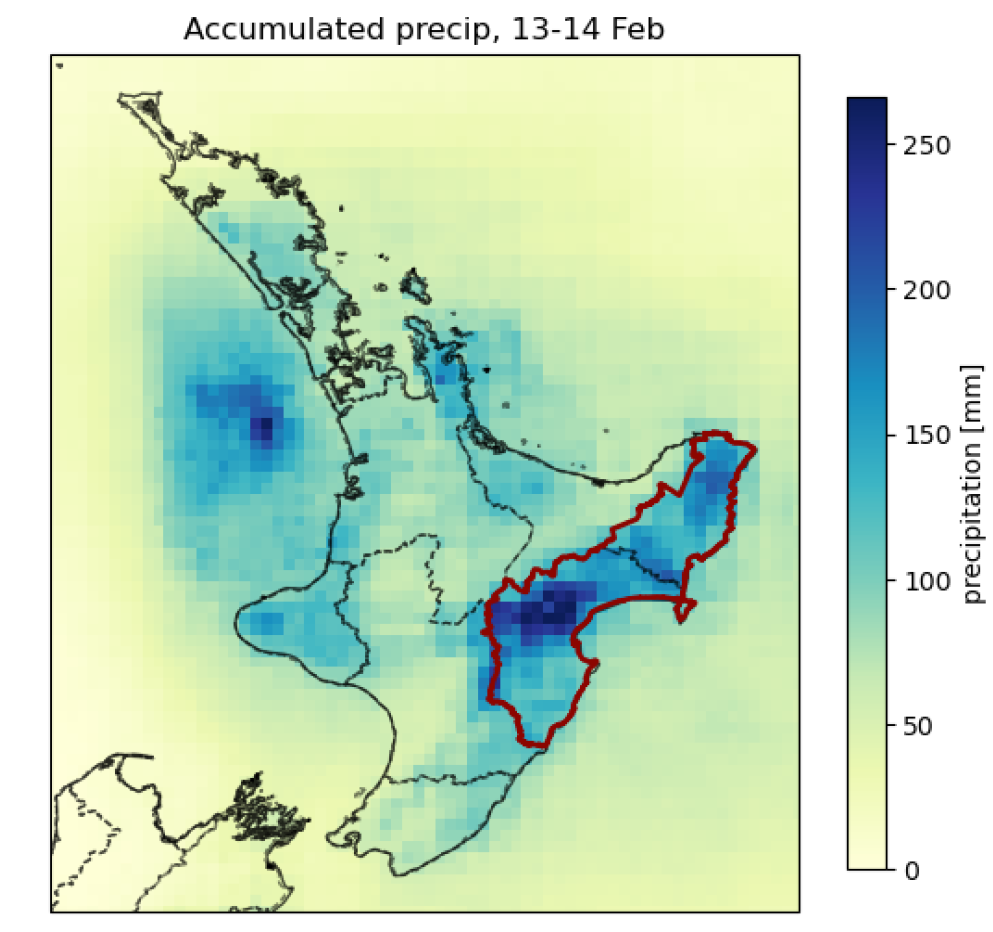
Overall, Cyclone Gabrielle has topped the tables as the costliest tropical cyclone on record in the southern hemisphere, causing more than $8bn in damages and killing at least 11 people.
Cyclone Gabrielle lashed New Zealand, causing extensive flooding, landslides and damage to infrastructure and prompting the country to declare a national state of emergency for only the third time in its history https://t.co/Ali5GD4tVM pic.twitter.com/CFqZ7vXZ0k
— Reuters (@Reuters) February 14, 2023
New Zealand’s prime minister, Chris Hipkins, called the cyclone “the most significant weather event New Zealand has seen in this century”. The country’s climate change minister, James Shaw, linked the cyclone directly to global warming, according to the Guardian. The paper reports:
“In a furious speech to parliament, he decried ‘the lost decades that we spent bickering and arguing about whether climate change was real or not, whether it was caused by humans or not, whether it was bad or not, whether we should do something about it or not’.”
Extreme rainfall
To put the extreme rainfall from Cyclone Gabrielle into its historical context, the authors analysed a timeseries of historical weather station data for the Te Matau-a-Māui and Te Tairāwhit regions over 1979-2023.
The authors selected 24 stations run by New Zealand’s National Institute of Water and Atmospheric Research Ltd or Metservice for this analysis. However, they found that many of the automated stations lost power during the cyclone and only six stations recorded observations of rainfall during the cyclone.
The map below shows 24 weather stations. The black crosses indicate stations that recorded rainfall data during the cyclone, while blue crosses indicate stations that did not. A further three rainfall records curated by the council are shown by numbers 1-3. The shading indicates the two-day accumulated rainfall from Cyclone Gabrielle over 13-14 February, where darker shading indicates heavier rainfall.
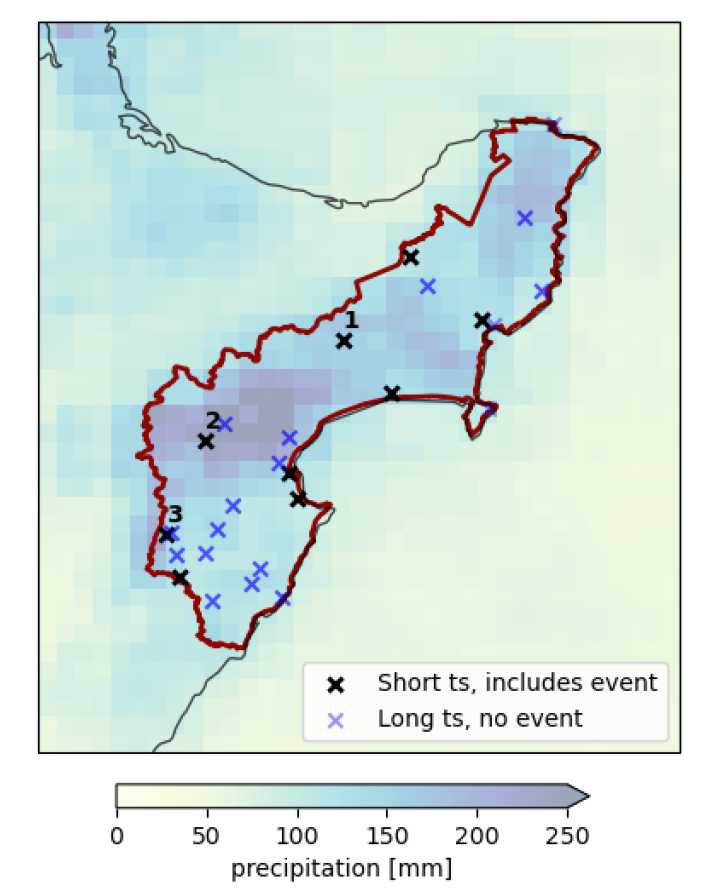
Of the six stations that were active during the cyclone, the earliest records begin in 1990. Meanwhile, 15 of the 18 stations that were offline during the cyclone have observations as far back as the year 1979.
The authors find that the extreme rainfall seen during Cyclone Gabrielle is rare. Rainfall of that level has return times ranging from once every 70 to 320 years across the different measurement stations, according to the study. It adds that, averaged over the whole study area, the return period is between 10 and 35 years – meaning that in today’s climate, the event is expected to happen once every 10-35 years.
The authors also find that “very heavy rain”, comparable to the extreme rainfall event seen during Cyclone Gabrielle, is now four times more common in the region. They also note that “extreme rainfall events now drop 30% more rain” thanks to the 1.2C of global warming seen to date.
The study’s press release highlights that the heavy rain that flooded north-east Aotearoa New Zealand “is now more common on a warmer planet”.
Attribution
Attribution is a fast-growing field of climate science that aims to identify the “fingerprint” of climate change on extreme-weather events, such as heatwaves and droughts. In this study, the authors investigated the impact of climate change on rainfall over New Zealand.
To conduct attribution studies, scientists use models to compare the world as it is today to a “counterfactual” world without human-caused climate change. This study aimed to distinguish the “signal” of climate change in rainfall over New Zealand.
Overall, the authors were unable to quantify the specific role of human-induced climate change on this event – in part because the small area of the study region limited the reliability of models simulating rainfall over the region.
However, the authors highlight past research which shows that climate change is expected to reduce the number of tropical cyclones in the southern hemisphere, while increasing the intensity of the cyclones that do form.
Prof Fredi Otto – a senior lecturer at the Grantham Institute for Climate Change and the Environment at Imperial College London and an author on the study – told a press briefing “there’s no doubt that climate change played an important role in making this kind of short-term heavy rainfall more intense”.
(These findings are yet to be published in a peer-reviewed journal. However, the methods used in the analysis have been published in previous attribution studies.)
Looking to the future, the authors find that, as the planet continues to warm, rainfall intensity may “slightly increase”, but they add that “uncertainty remains large”.
Vulnerability
The authors also put the damage from Cyclone Gabrielle into broader context by looking at the vulnerability and exposure of the affected communities.
Throughout January 2023, before Cyclone Gabrielle had even formed, New Zealand was already being inundated with “torrential rainfall”. On 3 February, the Guardian reported that “historic rainfall” had already hit New Zealand. The country saw more than 8.5 times its typical January levels, according to the paper, while the city of Auckland saw its wettest January since records began.
Two weeks before Cyclone Gabrielle hit New Zealand, the country experienced its costliest ever extreme rainfall event – the Tāmaki Makaurau anniversary floods, also known as the Auckland anniversary floods. The rainfall caused flooding, landslides and power cuts.
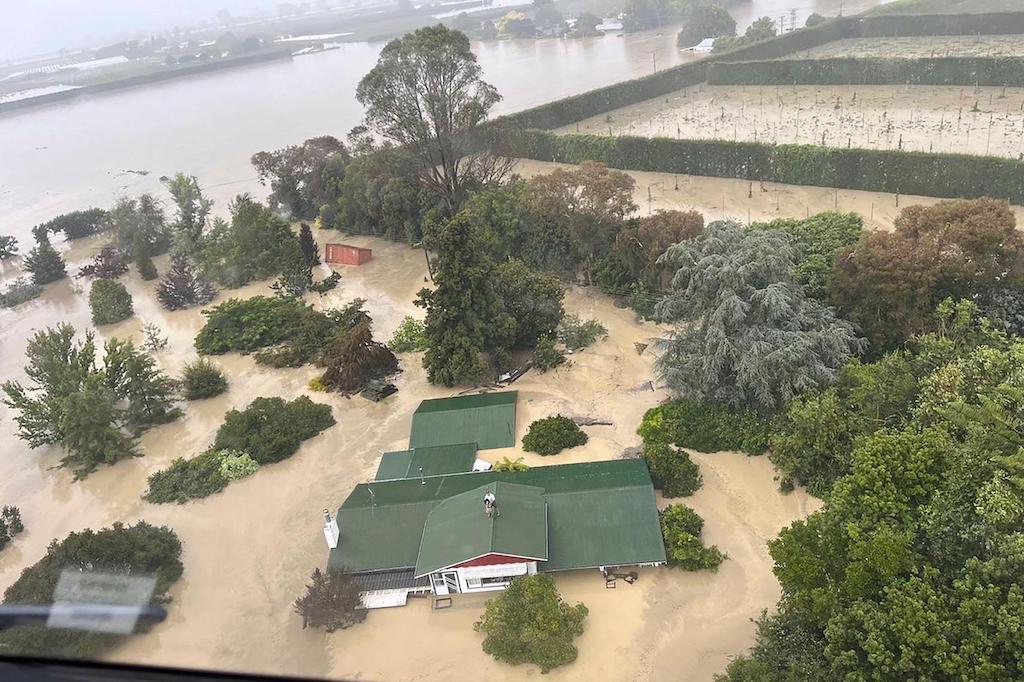
“The flood protection systems and infrastructure weren’t built to withstand [the impacts] and were overwhelmed”, Julie Arrighi from the Red Cross Red Crescent Climate Centre told the press briefing.
Meanwhile, the failures in electricity and communication services compounded the problem for already-vulnerable groups. According to the study, the Te Matau-a-Māui and Te Tairāwhiti regions felt the most intense human impacts from the cyclone in part because the most intense rainfall arrived in the middle of the night, making communication difficult.
Arrighi also notes that the most severely impacted areas are “also home to one of the largest Maori populations”. She adds that these Indigenous groups are “disproportionately vulnerable and exposed” to extreme weather – thanks to a “long legacy dating back to colonisation”.
Update: This article was updated on 29/03/2023 to correct the population given for New Zealand.



